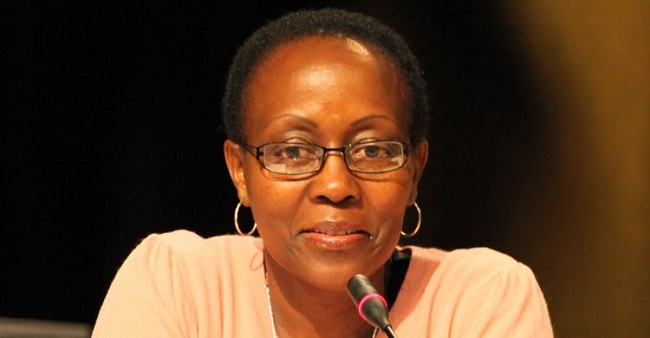Delegates from over 140 countries are converging on Rome, Italy to negotiate the zero draft of a landmark post-2020 global biodiversity framework and targets for nature to 2030.
The new framework will be considered by the 196 Parties to the Convention on Biological Diversity (CBD) at the 2020 UN Biodiversity Conference (CBD COP15) in Kunming, China, from October 15 to 28, 2020.
Elizabeth Maruma Mrema, Acting Executive Secretary of the CBD, in an interview sheds some light on the journey so far as well as the path to Kunming later in the year. Excerpts:

This is just the first negotiation for the CBD in this super year and it will conclude in China in October. How supportive is the global community for this effort?
Our Super Year for Biodiversity journey to Kunming in October began with the World Economic Forum having, for the first time in its history, biodiversity, and nature as a theme which cut across most of their deliberations during their Forum a month ago. Then the world gathered in Gandhinagar, India for the Convention on Migratory Species CMS COP13, which had the Post-2020 Global Biodiversity Framework as its theme in the context of ecological connectivity and migratory species.
Here in Rome, we have over 1,000 registered participants representing 142 countries, as well as delegates from civil society, from indigenous peoples and local communities, from business, from women and youth, and many other stakeholders. It is only through the participation of Parties, the inclusion of indigenous peoples and local communities and all other stakeholders, that we can all meaningfully discuss, engage and ultimately advance the three objectives of the Convention and ensure the ensuing products will indeed be of universal nature.
To put the global challenge of the loss of nature into context, how significant is the problem of global biodiversity loss?
The world is presently reeling under a severe biodiversity crisis. Extinction rates are estimated to be 1,000 times the background rate, and future rates could even be 10,000 times higher. The IPBES reports that 75% of the Earth’s land surface is significantly altered, 66% of the ocean area is experiencing increasing cumulative impacts, and over 85% of wetlands have been lost. On average, population sizes of wild vertebrate species have declined precipitously over the last 50 years on land, in freshwater, in the sea, and approximately 25% of species in assessed animal and plant groups are threatened.
How important to your work was the recent Intergovernmental Science-Policy Platform on Biodiversity and Ecosystem Services (IPBES) report on biodiversity loss released last summer?
The Intergovernmental Science-Policy Platform on Biodiversity and Ecosystem Services (IPBES) report as well as the Intergovernmental Panel on Climate Change (IPCC) have shown that biodiversity loss, climate change impacts and land degradation are deeply interconnected and are thus taking place on an unprecedented level. But the work of these two bodies also gives me hope because we now have the evidence, knowledge and the ability to address them on a scale unimaginable, even just a few years ago.
The achievement of biodiversity targets will generate multiple benefits for the well-being of society. It will also make a major contribution towards facilitating sustainable development through poverty alleviation and enhanced economic prosperity, towards a life in harmony with nature at all levels be it at local, national and global levels.
How are you and the other leaders working to shape the results at this and the other interim meetings and ultimately the full Conference of the Parties meeting later this year in China?
The first or “zero” draft of the agreement contains a proposed framework that applies a “theory of change” approach, a strategic planning framework that will allow diverse stakeholders to work together towards common goals, use the same language, and ensure collective action. The world out there is watching and eagerly waiting for results. They want to see demonstrable progress towards a clear, actionable and transformative global framework on biodiversity- a framework that is easy to downscale to the national level, a framework that can serve as one of the pillars of the international sustainable development architecture.
How confident are you that you can achieve the ambitious goal of getting the world to agree to conserve 30% of the planet by 2030 for the benefit of nature?
Addressing these problems will require all of us to take serious concerted actions to bring about the world we want and to set global priorities for the ‘what’, ‘how’ and ‘where’ of biodiversity conservation. This meeting marks the start of a critical year in our journey, which will culminate in the adoption of a Post-2020 Global Biodiversity Framework at COP 15.
To that end, we have embarked on an ambitious, open and transparent consultative process. Parties and stakeholders will work together in a meaningful and integrated manner, building on the successes and lessons we have learned in the past nine years. As emphasised by Parties, this work will continue to be fully informed by the best science and best available evidence, drawing from IPBES and other relevant assessments.
How much pressure do you personally feel to deliver results at this and the other interim meetings and ultimately the full Conference of the Parties meeting later this year in China?
The first or “zero” draft of the agreement contains a proposed framework that applies a “theory of change” approach, a strategic planning framework that will allow diverse stakeholders to work together towards common goals, use the same language, and ensure collective action. The world out there is watching and eagerly waiting for results. They want to see demonstrable progress towards a clear, actionable and transformative global framework on biodiversity – a framework that is easy to downscale to the national level, a framework that can serve as one of the pillars of the international sustainable development architecture.
